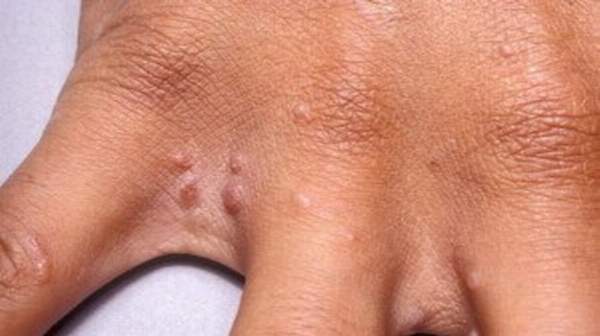What's in this article?
What is Scabies?
Scabies is not an infection but an infestation. The tiny mites called Sarcoptes scabies set up shop in the outer layers of human skin. Skin does not take kindly to the invasion. While the mites burrow and lay eggs inside the skin the infestation leads to itching and an angry rash.
Scabies produces a skin rash composed of small red bumps and blisters and affects specific areas of the body. Scabies may involve the webs between the fingers, the wrists and the backs of the elbows, the knees, around the waist and umbilicus, the axillary folds, the areas around the nipples, the sides and backs of the feet, the genital area, and the buttocks. The bumps (medically termed papules) may contain blood crusts. It is helpful to know that not every bump is a bug. In most cases of scabies affecting otherwise healthy adults, there are no more than 10-15 live mites even if there are hundreds of bumps and pimples on the skin.
The scabies rash is often apparent on the head, face, neck, palms, and soles of the feet in infants and very young children but usually not in adults and older children.
How do you get scabies?
Direct skin-to-skin contact is the mode of transmission. Scabies mites are very sensitive to their environment. They can only live off of a host body for 24-36 hours under most conditions. Transmission of the mites involves close person-to-person contact of the skin-to-skin variety. It is hard, if not impossible, to catch scabies by shaking hands, hanging your coat next to someone who has it, or even sharing bedclothes that had mites in them the night before. Sexual physical contact, however, can transmit the disease. In fact, sexual contact is the most common form of transmission among sexually active young people, and scabies has been considered by many to be a sexually transmitted disease (STD). However, other forms of physical contact, such as mothers hugging their children, are sufficient to spread the mites. Over time, close friends and relatives can contract it this way, too. School settings typically do not provide the level of prolonged personal contact necessary for transmission of the mites.
Scabies facts
- Scabies is an itchy, highly contagious skin disease caused by an infestation by the itch mite Sarcoptes scabiei.
- Direct skin-to-skin contact is the mode of transmission.
- A severe and relentless itch is the predominant symptom of scabies.
- Sexual contact is the most common form of transmission among sexually active young people, and scabies has been considered by many to be a sexually transmitted disease (STD).
- Signs and symptoms of scabies include a skin rash composed of small red bumps and blisters and affects specific areas of the body. Other symptoms can include tiny red burrows on the skin and relentless itching. The itch leads to frequent scratching, which may predispose the skin to secondary infections.
- Treatment includes oral or topical scabicidal drugs.
Scabies Causes
Scabies is caused by an eight-legged mite (Sarcoptes scabiei var. hominis) that is less than 0.5 mm long. How long do scabies live without a host? The mite can only survive for three days in the environment. Once on a human body, the mite may reproduce and cause symptoms for years.
The life cycle of the scabies mite starts when the female tunnels (burrows) into the skin and deposits her eggs. Larvae hatch from the eggs within three to 10 days and molt to become nymphs. Nymphs mature into adults that deposit additional eggs and live approximately four weeks. Burrowing and movement of the mites cause intense itching due to a type of allergic reaction to mite proteins. If the person has never been exposed to scabies before, he or she may not show symptoms until four to six weeks after the initial infestation. Individuals who have been exposed in the past usually show symptoms within a few days.
How Bad Is It?
The mere thought of playing host to a family of scabies is frightening in and of itself. It should be noted, however, that scabies mites don’t transmit diseases. That said, extensive scratching can cause secondary infection, including impetigo. In the rare instance where a scabies infestation goes untreated for months or years, Norwegian scabies can develop, but usually only as a result of a weakened immune system.
What Scabies Look Like




read more about Scabies: Facts and Symptoms





